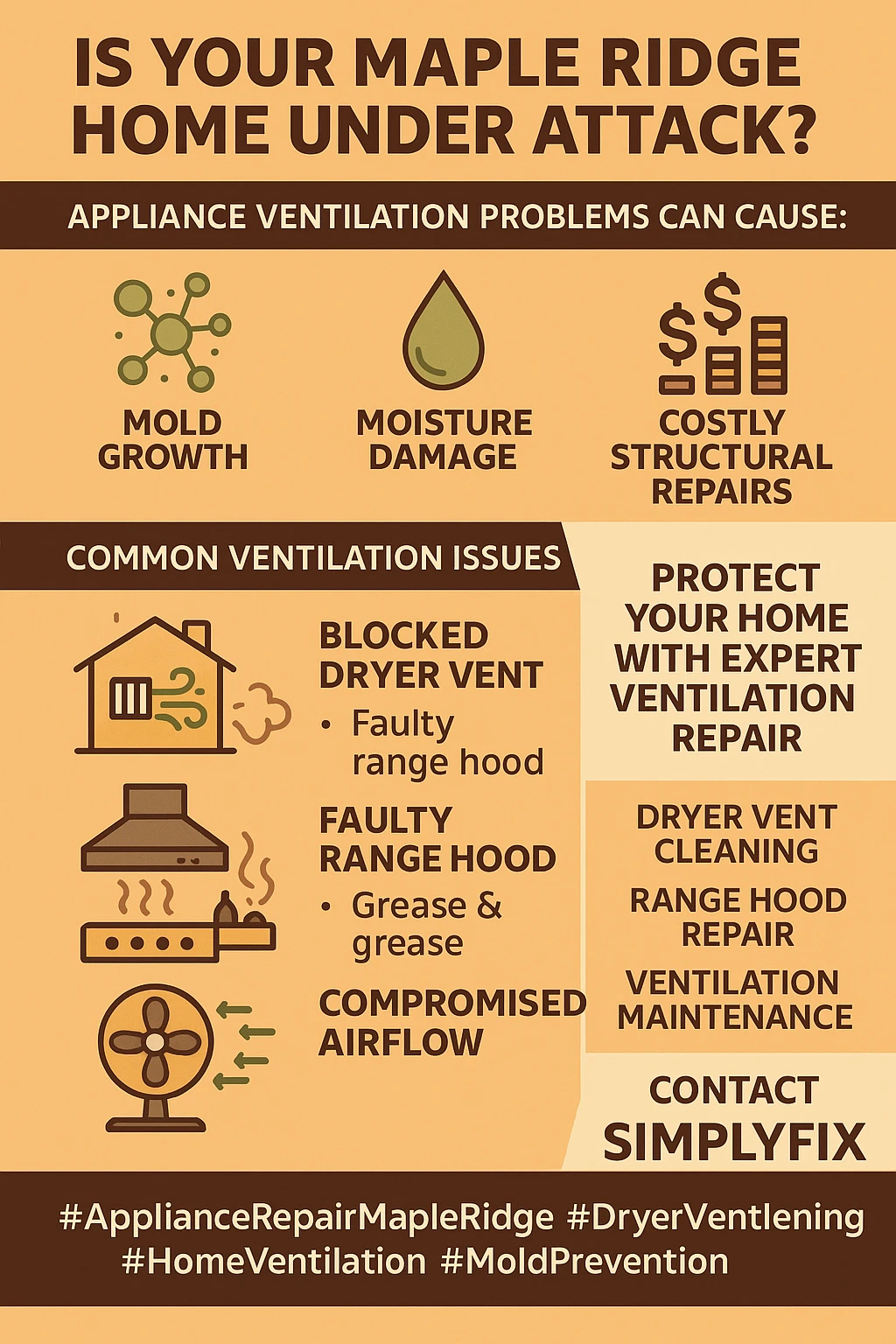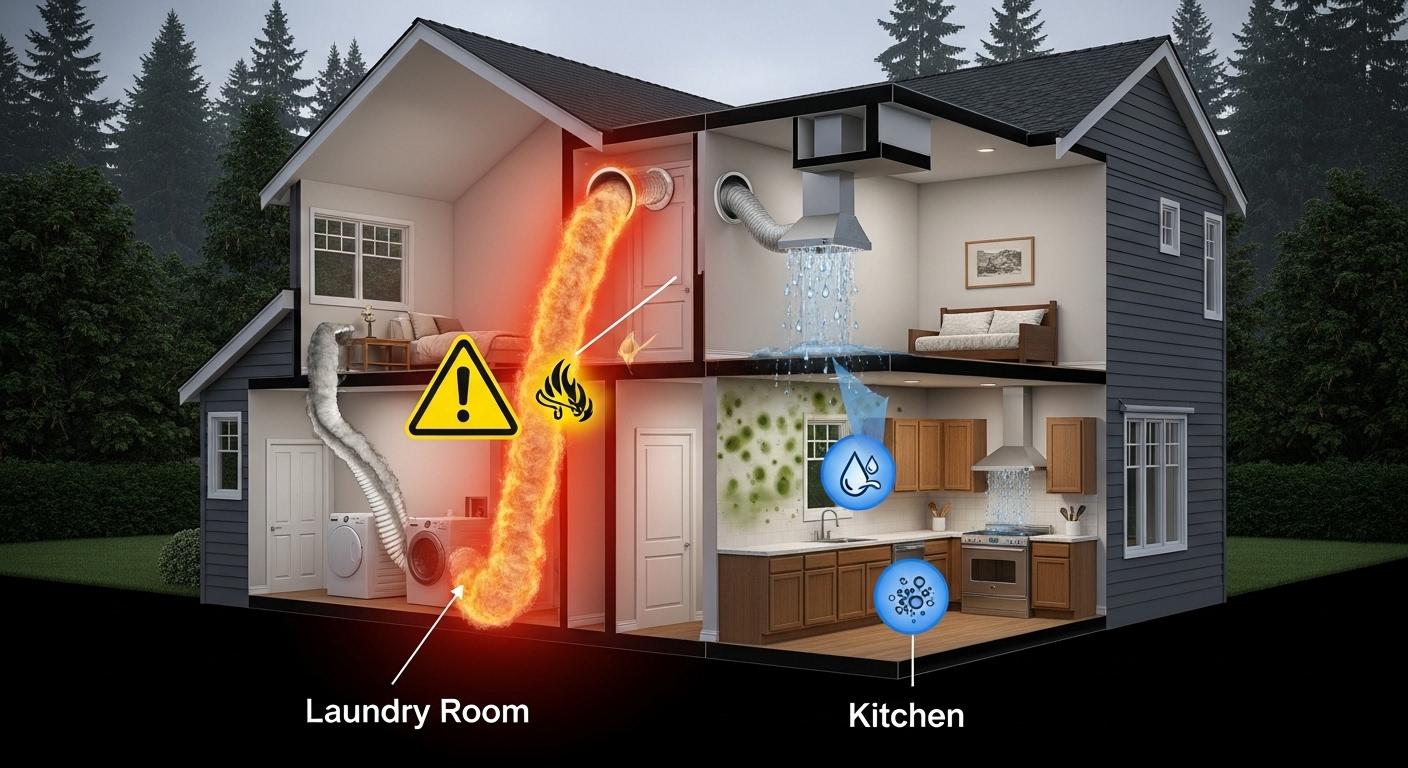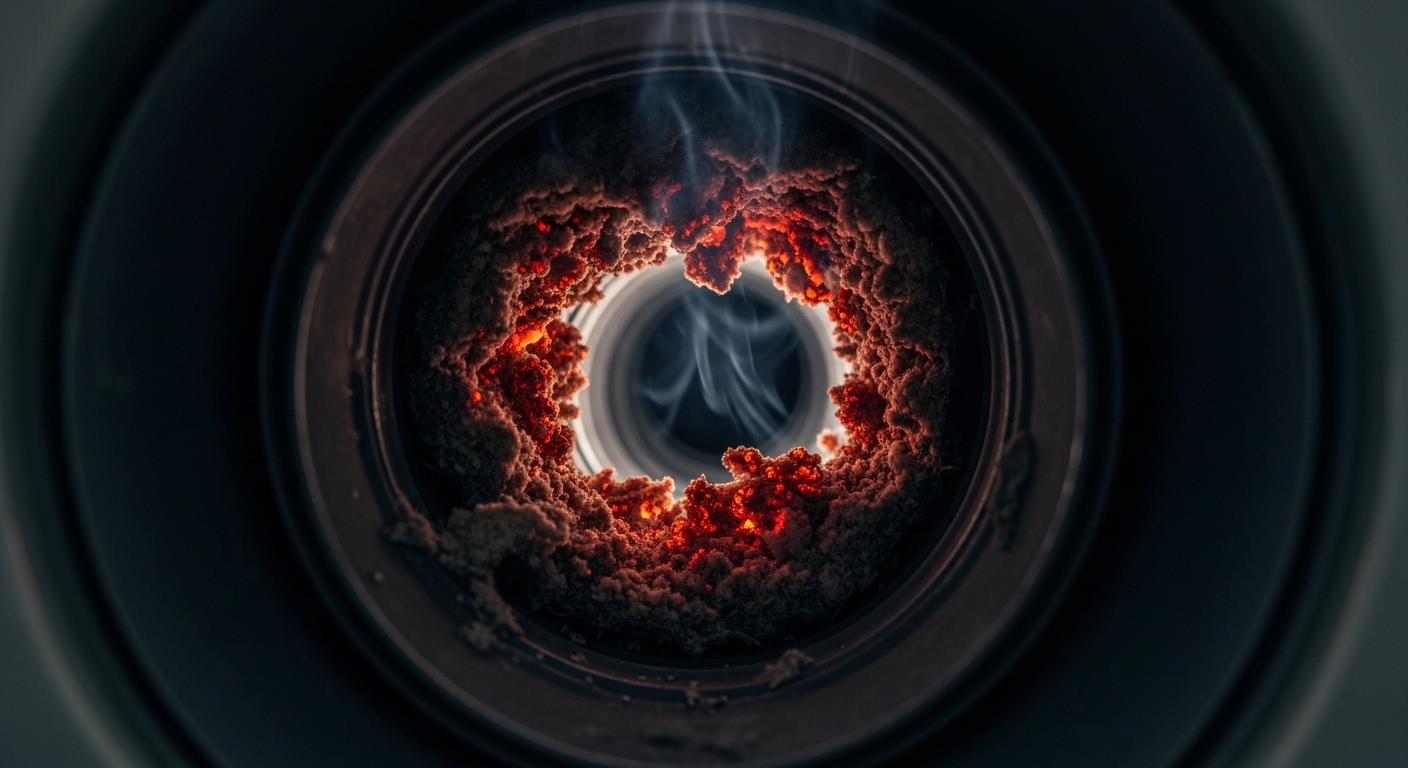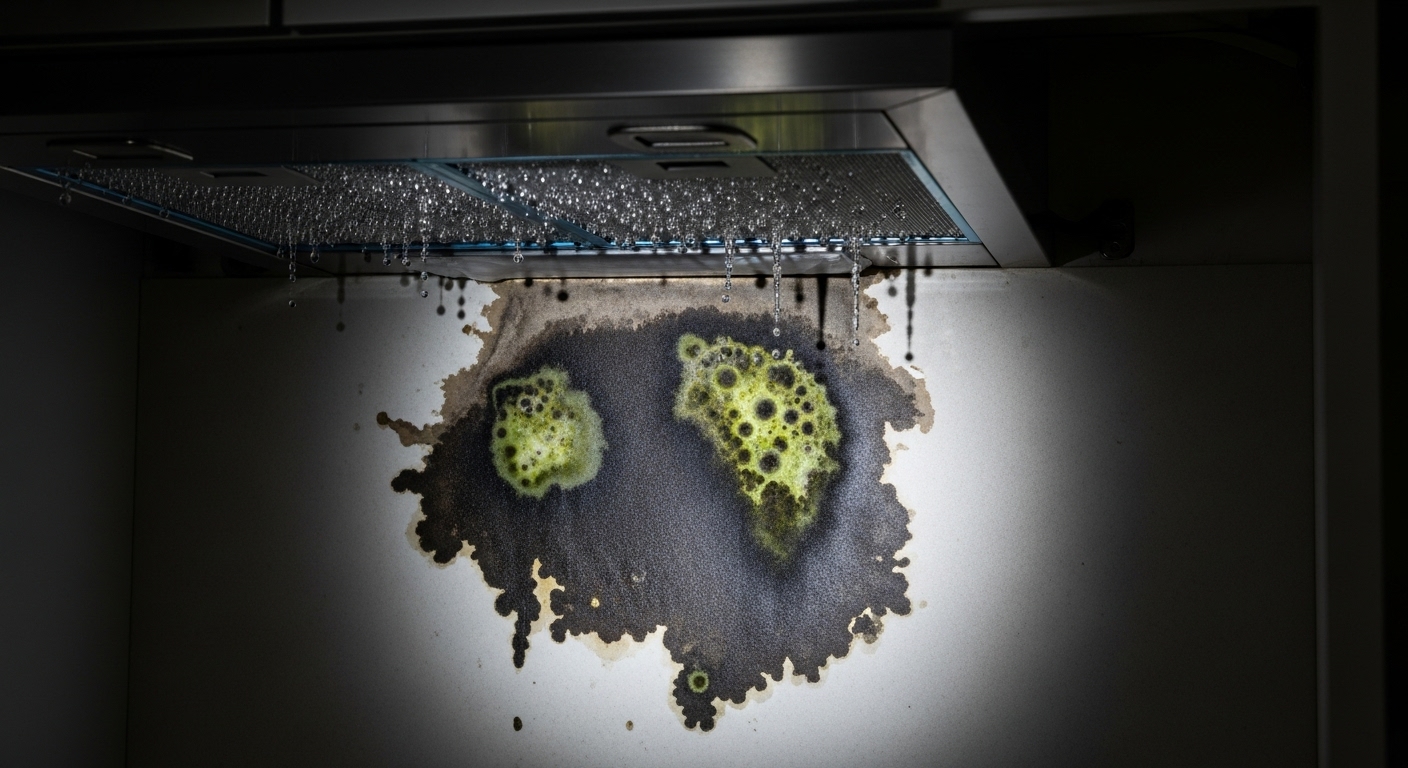Experiencing mysterious moisture problems, unusual energy bills, or persistent odors in your Maple Ridge home? These could be warning signs of appliance ventilation issues that are silently causing thousands of dollars in structural damage while creating serious health and safety risks for your family.
Think your home is safe just because your appliances seem to be working fine? Think again! I’ve been diving deep into the hidden world of appliance ventilation problems, and what I discovered about Maple Ridge homes specifically will honestly blow your mind. We’re talking about issues that start small – maybe just a slightly longer dryer cycle or a bit more steam in the kitchen – but snowball into massive problems that can literally compromise your home’s structural integrity.
Living in this gorgeous coastal region comes with perks we all love, but it also creates the perfect storm for ventilation nightmares that most homeowners never see coming. The combination of our humid air, salt exposure, and those crazy temperature swings we get throughout the year creates conditions that turn minor maintenance issues into major disasters. I’m talking water damage, mold growth, fire hazards, and repair bills that’ll make your wallet cry – all from something as “simple” as a clogged dryer vent or poorly functioning range hood.
Here’s the real kicker: most of these problems are completely preventable with the right knowledge and approach. After researching this topic extensively and talking to local repair experts, I’ve put together this comprehensive guide to help you identify, understand, and tackle these issues before they empty your bank account and put your family at risk.
Key Outtakes:
- Clogged dryer vents cause approximately 15,900 residential fires annually, with failure to clean being the leading cause of home clothes dryer fires
- Maple Ridge’s coastal humidity and salt air accelerate appliance component corrosion, reducing typical lifespans by 2-3 years without proper ventilation maintenance
- Poor kitchen and bathroom ventilation creates moisture conditions that promote mold growth within 24-48 hours, leading to structural damage and health risks
- Professional appliance ventilation cleaning costs between $100-$300 but prevents thousands in water damage, mold remediation, and structural repairs
- Blocked appliance vents increase energy consumption by up to 30% while reducing appliance efficiency and lifespan significantly

How Maple Ridge’s Coastal Climate Turns Minor Ventilation Issues Into Major Problems

Let me start with something that might surprise you – our beautiful coastal location is actually working against our appliances every single day. While we’re enjoying those mild temperatures and ocean breezes, our homes are dealing with a unique set of environmental challenges that most maintenance guides completely ignore. The high humidity levels in our area don’t just make summer days feel muggy; they’re literally accelerating the corrosion process in every metal component of your appliances.
I learned from local repair specialists that coastal air contains salt particles that can be devastating to appliance components over time. This isn’t just about visible rust – we’re talking about microscopic damage that builds up in places you can’t even see, like inside dryer vents, range hood ducts, and exhaust fan housings. The salt doesn’t just sit there harmlessly; it actively promotes corrosion that weakens seals, electrical connections, and metal ductwork.
The temperature fluctuations we experience throughout the year create another layer of complexity that standard ventilation advice doesn’t account for. Our mild winters followed by warm summers, plus those occasional heat dome events, force appliances to work much harder during seasonal transitions. This constant expansion and contraction of materials, combined with humidity changes, creates stress points that lead to premature failure of ventilation components.
What really gets me frustrated is how our local water quality adds another dimension to this problem. The minerals in our water supply create scale buildup in water-using appliances like dishwashers and washing machines, but here’s what most people don’t realize – this mineral buildup also affects the steam and moisture that these appliances produce, making that moisture more corrosive to ventilation systems.
The seasonal wetness we experience creates what I call “humidity cycles” that trap moisture in ventilation systems for extended periods. Unlike drier climates where moisture evaporates quickly, our coastal conditions mean that any moisture that gets into vents, ducts, or exhaust systems tends to stick around much longer, creating perfect breeding conditions for mold and accelerating the deterioration of materials.
The Hidden Fire Hazard Lurking In Your Laundry Room

Now let’s talk about something that keeps me up at night – the fire risk hiding in your dryer vent. The statistics are absolutely terrifying when you really look at them. We’re dealing with approximately 15,900 dryer fires every year, and the leading cause isn’t some random electrical failure or manufacturing defect. It’s something completely preventable: failure to clean dryer vents properly.
Here’s what happens that most homeowners never think about: every load of laundry produces lint, and while your lint trap catches most of it, a significant amount still makes its way into the vent system. In our humid Maple Ridge climate, this lint doesn’t just sit there harmlessly. The moisture in the air causes it to stick to vent walls more aggressively than it would in drier climates, creating thick layers of highly flammable material in places you can’t see or reach.
If you have a gas dryer, the situation becomes even more dangerous. Clogged vents can lead to carbon monoxide buildup inside homes since CO is odorless and colorless, accumulating to dangerous levels without being noticed. This invisible killer can affect your family’s health long before you realize there’s a problem, causing symptoms that are often mistaken for flu or allergies.
The energy efficiency impact is something that hits your wallet every month, but most people don’t connect the dots. When your dryer vent is even partially blocked, your dryer has to work significantly harder and run much longer to dry the same load of clothes. We’re talking about energy consumption increases of up to 30%, plus the additional wear and tear on your appliance that shortens its lifespan considerably.
What really bothers me is the false sense of security that many homeowners have about cleaning their lint trap. Yes, cleaning the lint trap after every load is important, but it only captures about 60-70% of the lint produced during the drying process. The remaining 30-40% travels through the vent system, and in our humid climate, it sticks to duct walls more aggressively than in drier regions.
The problem compounds over time in ways that most people never anticipate. As lint builds up in the vent system, it restricts airflow, which causes the dryer to run hotter and longer. This increased heat and extended runtime create even more lint, and the cycle continues until you have a serious fire hazard on your hands. Professional technicians tell me they’ve seen vents so clogged that it’s amazing the homes didn’t already experience fires.
Range Hood Ventilation Failures: Your Kitchen’s Silent Moisture Problem

Moving into the kitchen, let’s address something that affects literally every home but gets overlooked constantly – range hood ventilation problems. I used to think that as long as my range hood was making noise and moving some air, everything was fine. Boy, was I wrong! The moisture issues created by poor kitchen ventilation extend far beyond just fogged-up windows during cooking.
Here’s the science behind what’s happening: when you cook, especially when boiling, steaming, or frying, you’re releasing enormous amounts of water vapor into the air. If your range hood isn’t properly venting this moisture outside, or if the ventilation system is blocked or damaged, all that moisture has to go somewhere. Condensation occurs when warm, moist air from cooking interacts with cooler surfaces in range hood vents, creating water droplets that stick to vent interiors and eventually cause serious problems.
The moisture doesn’t just disappear when you finish cooking – it gets absorbed into your walls, cabinets, and ceiling materials. Over time, this constant exposure to elevated humidity levels creates perfect conditions for m

Recent Comments